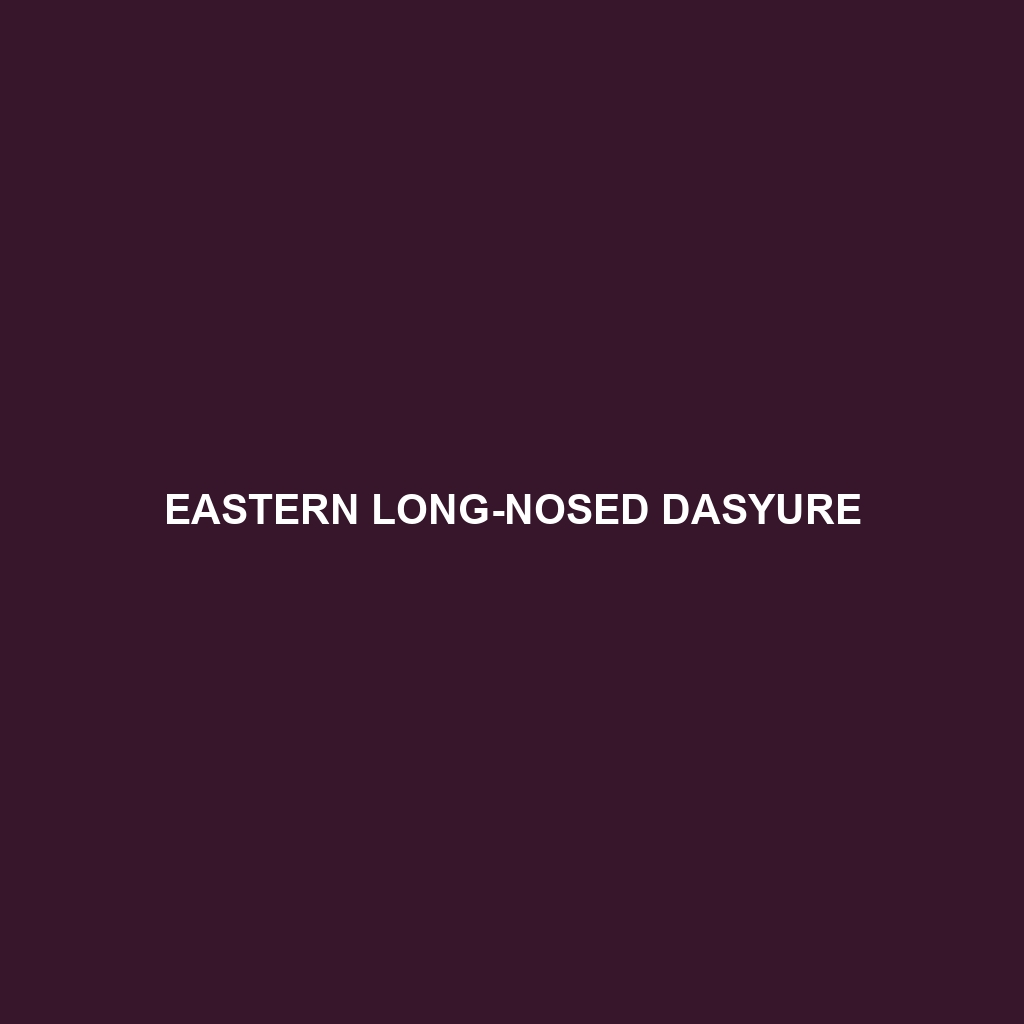Eastern Long-nosed Dasyure (Dasyurus viverrinus)
The Eastern Long-nosed Dasyure, also known as the Eastern Quoll, is a small to medium-sized carnivorous marsupial native to Australia. This remarkable species is known for its distinctive spotted fur, agile movements, and predatory prowess. The Eastern Long-nosed Dasyure plays a crucial role in its ecosystem as both a predator and a scavenger, and it is notable for its adaptability to various habitats and conditions.
Physical Characteristics:
Size: Adult Eastern Long-nosed Dasyures typically measure between 35 to 45 centimeters (14 to 18 inches) in body length, with an additional tail length of about 20 to 30 centimeters (8 to 12 inches). They usually weigh between 1 to 2 kilograms (2.2 to 4.4 pounds).
Coloration: This species exhibits a striking coat with base colors ranging from fawn to almost black, adorned with prominent white spots that pattern its back and sides. The underbelly is generally lighter in color.
Special Features: The Eastern Long-nosed Dasyure has a pointed snout, large rounded ears, and a thick, bushy tail. Their sharp claws and teeth are well-adapted for hunting and consuming a variety of prey.
Behaviors:
Social Interactions: Generally solitary creatures, Eastern Long-nosed Dasyures have a tendency to come together during the breeding season. They are territorial and will actively defend their home ranges from intruders of the same species, particularly those of the same sex.
Feeding Habits: As opportunistic carnivores, they feed on a diverse diet including small mammals, birds, insects, and carrion. They use their keen sense of smell and agile hunting skills to track and capture prey.
Ecological Roles: By controlling the population of small animals and insects, they help maintain ecological balance. Their scavenging habits also aid in the decomposition process, thereby contributing to nutrient cycling in their habitats.
Habitats:
Eastern Long-nosed Dasyures are versatile in their habitat preferences. They can be found in a variety of environments, including:
Forests: Both temperate and tropical forests with dense underbrush provide ideal hunting grounds.
Grasslands: Open grasslands where they can find easy access to small prey and insects.
Woodlands: Areas with scattered trees and shrubs that offer ample cover and food sources.
They typically shelter in hollow logs, rock crevices, or burrows abandoned by other animals.
Adaptations:
Physical Adaptations: Their sharp claws and teeth are perfectly suited for capturing and dismembering prey. Their spotted fur provides camouflage in the dappled light of their forested habitats.
Behavioral Adaptations: Being nocturnal, they avoid the heat of the day and reduce the risk of predation. Their solitary nature minimizes competition for food within their species.
Conservation Status:
The Eastern Long-nosed Dasyure is currently listed as Near Threatened on the IUCN Red List. Major threats include habitat destruction, predation by introduced species such as cats and foxes, and competition for food resources. Conservation efforts are focused on habitat preservation, controlling invasive species, and breeding programs to help stabilize and increase their population.
Fun Facts:
The Eastern Long-nosed Dasyure is known for its impressive agility and can leap up to 1.5 meters (5 feet) to catch prey or evade predators.
Despite their carnivorous diet, they occasionally consume fruits and other plant materials.
These marsupials have an average lifespan of about 3 to 4 years in the wild, though they can live longer in captivity.
In addition to their vocalizations, they communicate through scent markings to establish territory and attract mates.
The Eastern Long-nosed Dasyure is a fascinating and vital component of its ecosystem, deserving both admiration and conservation efforts to ensure its continued presence in the wild.
